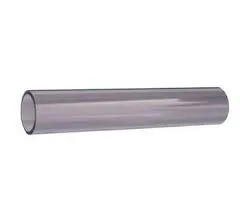Dec . 12, 2024 02:26 Back to list
pvc ppr pipes and fittings
Understanding PVC and PPR Pipes and Fittings An Essential Guide
In the world of plumbing and construction, the choice of pipes and fittings is crucial for ensuring efficient water flow and long-lasting durability. Two popular materials used in this domain are PVC (Polyvinyl Chloride) and PPR (Polypropylene Random Copolymer). Both have unique properties that make them suitable for different applications. This article will delve into the characteristics, advantages, and common uses of PVC and PPR pipes and fittings.
What are PVC and PPR Pipes?
PVC Pipes and Fittings PVC is a widely used plastic that is known for its strength, durability, and resistance to corrosion and chemicals. PVC pipes are often used for water supply, drainage, and sewage systems due to their excellent mechanical properties and cost-effectiveness. The fittings made from PVC are designed to connect various sections of the piping and are available in a variety of shapes and sizes to accommodate different needs.
PPR Pipes and Fittings PPR, on the other hand, is known for its high-temperature resistance and can be used for both hot and cold water systems. PPR pipes are often used in residential and commercial plumbing, as well as in industrial applications. The fittings made from PPR offer a secure and leak-proof connection, making them ideal for long-term use in various environments.
Advantages of PVC Pipes
1. Cost-Effective One of the most significant advantages of PVC pipes is their affordability. They provide a cost-effective solution for various plumbing needs, making them a popular choice for construction projects.
2. Chemical Resistance PVC pipes have excellent resistance to a wide range of chemicals, which makes them suitable for certain industrial applications where chemical exposure is a concern.
3. Lightweight The lightweight nature of PVC makes it easier to handle and install, reducing labor costs and time.
4. No Corrosion Unlike metal pipes, PVC does not corrode, ensuring a longer lifespan and reducing maintenance costs.
pvc ppr pipes and fittings

Advantages of PPR Pipes
1. High Temperature Resistance PPR pipes can withstand high temperatures, making them ideal for hot water supply systems. They can typically handle temperatures up to 95°C (203°F).
2. Durability Known for their longevity, PPR pipes can last for 50 years or more if installed correctly. They are resistant to scaling and corrosion, ensuring consistent water flow over time.
3. Environmentally Friendly PPR is a recyclable material, which adds to its appeal for environmentally conscious builders and homeowners.
4. Seamless Connections The welding method used to join PPR pipes creates a strong and seamless connection, minimizing the chances of leaks.
Common Applications
PVC Pipes Due to their versatility, PVC pipes are commonly used in residential drainage systems, irrigation, and industrial applications. They are ideal for any system that requires a robust, low-maintenance piping solution.
PPR Pipes PPR pipes are predominantly used in plumbing systems for residential and commercial buildings, especially where hot water is involved. They are also preferred in heating systems due to their thermal efficiency.
Conclusion
Both PVC and PPR pipes and fittings offer numerous benefits that cater to a wide range of plumbing and construction needs. Choosing between PVC and PPR ultimately depends on the specific requirements of the project, including temperature tolerance, chemical resistance, and cost considerations. By understanding the properties and advantages of each type of pipe, builders and homeowners can make informed decisions that lead to lasting and efficient plumbing solutions.
-
High-Quality PPR Pipes and Fittings Durable ERA PPR & PVC PPR Solutions
NewsJul.08,2025
-
Black HDPE Cutting Board - Durable, Non-Porous & Food Safe HDPE Plastic Cutting Board
NewsJul.08,2025
-
High-Quality CPVC Panel Durable HDPE & PVC Panels Supplier
NewsJul.08,2025
-
Double PE Welding Rod Supplier - High Strength, Durable & Versatile Welding Solutions
NewsJul.07,2025
-
High-Quality PVC-O Pipe Supplier Durable 75mm PVC Pipe & Connections Leading PVC Pipe Company
NewsJul.07,2025
-
HDPE Drainage Pipe Supplier – Durable & Corrosion-Resistant Solutions
NewsJul.06,2025

